What Makes a Love-to-Hate Villain?
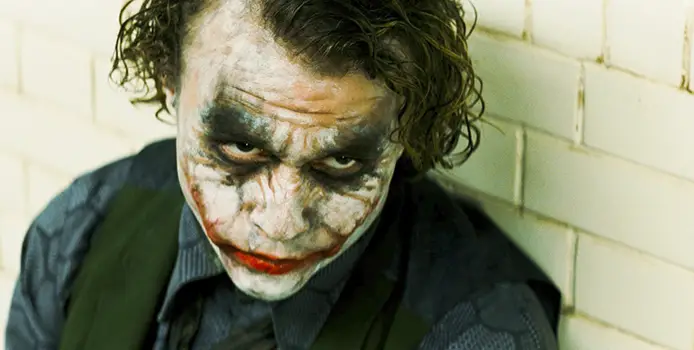
Rachael Sampson is a Northern screenwriter and critic based in…
Have you ever found yourself loving the bad guy in a movie? Villains come in many different forms, whether it’s the combined protagonist/antagonist situation like Mickey and Mallory Knox in Natural Born Killers, or the complete polar opposite of the hero, a dark and vicious villain like Heath Ledger‘s astounding role as The Joker in Christopher Nolan‘s The Dark Knight. And with the recent trailer release of the movie Suicide Squad (a team of DC comic villains coming together to take on the missions deemed too horrific for the heroes), it provokes the question: How can we root for the evil villain just as much (if not more) as we root for the hero? And why do we love these sadistic and twisted characters? Is it the actor behind them, or could it be their motives, personality or even their odd and disturbing methods of gratification?
Comical Deviance
Villains come in all different shapes and sizes, with varied motives and personas. From the hilariously eccentric and flamboyant outlaws such as Count Olaf in A Series of Unfortunate Events, to the more serious and bloodthirsty criminals like Hannibal Lecter in The Silence of the Lambs. Although both characters have evil tendencies, it is hard not to admire them, for their cunning and sly methods of trickery are incredibly impressive. Both villains take on disguises to worm their way out of situations, and the effort they go to must be commended.
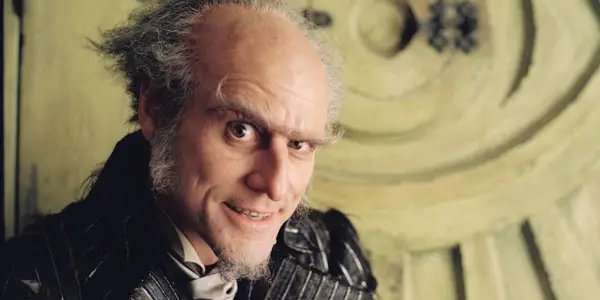
Count Olaf’s artistic, comical and persistent efforts make him unquestionably the best character in the movie, especially since the protagonists in the film are contrastingly gloomy and depressed. This evidently makes Jim Carrey‘s character the movie’s hook, and without this love-to-hate villain, it is hard to envisage such a successful film. It is his horribleness that thrills audiences and keeps them on the edge of their seat. His drive throughout the story is to become the Baudelaire children’s guardian since their parents mysteriously die, (I think we know who is to blame) so he can have the Baudelaire fortune, and once they are in his custody, he attempts to kill them so he can enjoy the money in peace. Although vile and diabolical, we can’t help but love him.
Jim Carrey alone brings so much comedy to his character that you almost want him to do more evil acts so that he gets more screen time. Anyone who has seen the film will remember the iconic and hilariously uncanny dinosaur impression scene, and that alone makes it difficult to detest him. Overall, in Count Olaf’s case, I believe it is the eccentricity and comicality that we admire so much.
Sympathy For The Devil
A Series of Unfortunate Events is a fantasy/comedy, so we can view Count Olaf in a light-hearted way, but can we say the same about the darker and more despicable villains in the horror genre? The adaptations of Mary Shelley‘s novel Frankenstein reveal an ugly monster made from body parts of the deceased, and the films follow the creature’s quest to track down and kill his creator and his creator’s family for abandoning him. Many adaptations have been made of Frankenstein, and most depict a monster that you fear yet also sympathise with, since he is rejected from society. In his monologue, we hear how alone and depressed he is.
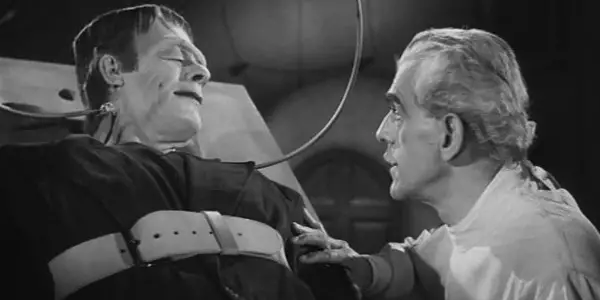
Although he kills for revenge, we see a broken man get abused and neglected by everyone he comes in contact with. Due to this, we root for the creature because everyone can sympathise and possibly relate to him in some way, either for not fitting the societal mould aesthetically or for feeling alone and unwanted. The novel written by Mary Shelley doesn’t openly state that the creature should be feared and loathed; instead Shelley leaves that for the readers to decide, making him a questionable character. It adds to his mysterious yet terrifying persona, and that comes across in most adaptations of the story on screen.
It is evident that the creature has committed unforgivable crimes, however we as an audience understand his motives. When the creature says “I am alone and miserable. Only someone as ugly as I am could love me”, the heartstrings are tugged and audiences instantly feel commiseration and pity for the ‘monster’. It makes him into a villain that you possibly don’t hate at all, but rather like, as he is truthful and honest, unlike Victor and the majority of villains in most motion pictures.
Heroic Villains
Not all films have a definitive villain throughout; some characters can convert from good to bad and vice versa, which makes their character uniquely admirable. An example can be seen in the Pirates of the Caribbean franchise. In the first film The Curse of the Black Pearl, we meet Captain Barbossa, the clear enemy and villain, as he leads the beloved trio Jack Sparrow, Elizabeth Swann and Will Turner into various life threatening scenarios. However, in the second, third and fourth installments of the franchise, he teams up with the heroes and fights against the likes of Davy Jones and Blackbeard.
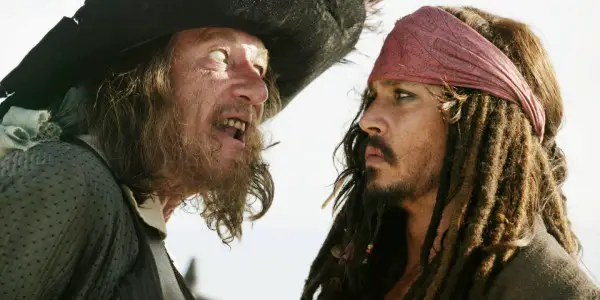
Although it cannot go unsaid that the entire movie premise is based around pirates, who are basically shifty criminals, the audience can still differentiate between the good villains (Jack Sparrow and Barbossa) and the bad villains (Davy Jones). In the first film Captain Barbossa sends his crew on thieving and kidnapping missions, and his death is something the characters and audience strive for. Yet when he is brought back from Davy Jones’ locker, his agenda changes. The complexity and flexibility of his character means you hate but then love him, which makes him rather unreliable and untrusting. Therefore, he is the perfect pirate and perfect villain that you can’t help but love.
The Actor
There are many movie villains that are admired amongst audiences, and each one has an individual characteristic that makes them admirable. One of the more dominant character properties tends to be the actor who brings the character to life. It is impossible to imagine anyone playing the role of Hans Landa in Inglourious Basterds as well as Christoph Waltz, or envisage the Harry Potter character Bellatrix Lestrange performed by anyone other than Helena Bonham Carter. They enliven the scripts/books and really get inside their characters. They somehow manage to suspend disbelief and almost make you want to side with them, for they make their crimes and brawls so captivating.
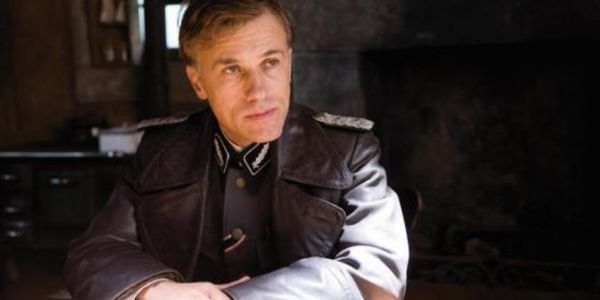
Heath Ledger‘s performance in The Dark Knight remains one of the most enthralling and phenomenal performances today. Every single movement he makes on screen, from his striking walk to the licking of his facial scar creates a terrifyingly unhinged villain. It is also rumored that Ledger asked Christian Bale to actually beat him up in the interview scene, showing the extreme lengths Ledger was willing to go to for his performance as The Joker.
Conclusion
Overall there are a variety of different factors which cause the admiration of villains, even those who are the most villainous of them all. Their cunning and wicked methods of deceit, complex personalities and the actors/directors/creators behind them all contribute to the portrayal of some truly fascinating and interesting criminals.
Although some of us won’t like to admit it, there is a side of us that roots for the evil characters. This could possibly be because we have seen the hero succeed too many times, and the complexity and diversity of villains is much larger than the diversity of heroes. Heroes can only go so far in bringing justice or reinstating the equilibrium of the story; however, villains on the other hand have no limitations as to what they will conjure up or destroy. Seeing characters with slack morals and untamed attitudes makes for an incredibly interesting narrative.
Does this make us slightly twisted too? Perhaps there is a villain in us all.
Who are your favourite movie villains of all time? Share your thoughts and comments below!
(top image source: Warner Bros. Pictures)
Does content like this matter to you?
Become a Member and support film journalism. Unlock access to all of Film Inquiry`s great articles. Join a community of like-minded readers who are passionate about cinema - get access to our private members Network, give back to independent filmmakers, and more.
Rachael Sampson is a Northern screenwriter and critic based in London. Her latest film is currently in post production and she has 2 shorts cooking in the oven. Rachael is also a published short story author and theatre maker. She often finds herself daydreaming about Andrea Arnold's filmography and firmly believes that Inglourious Basterds is the greatest movie ever made.













